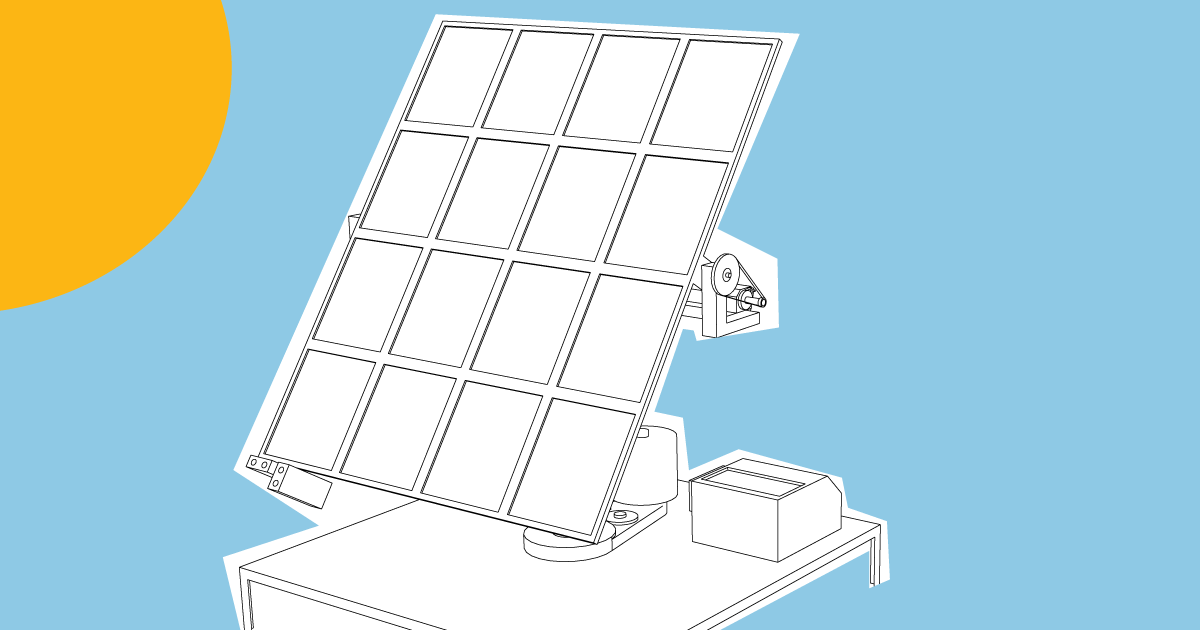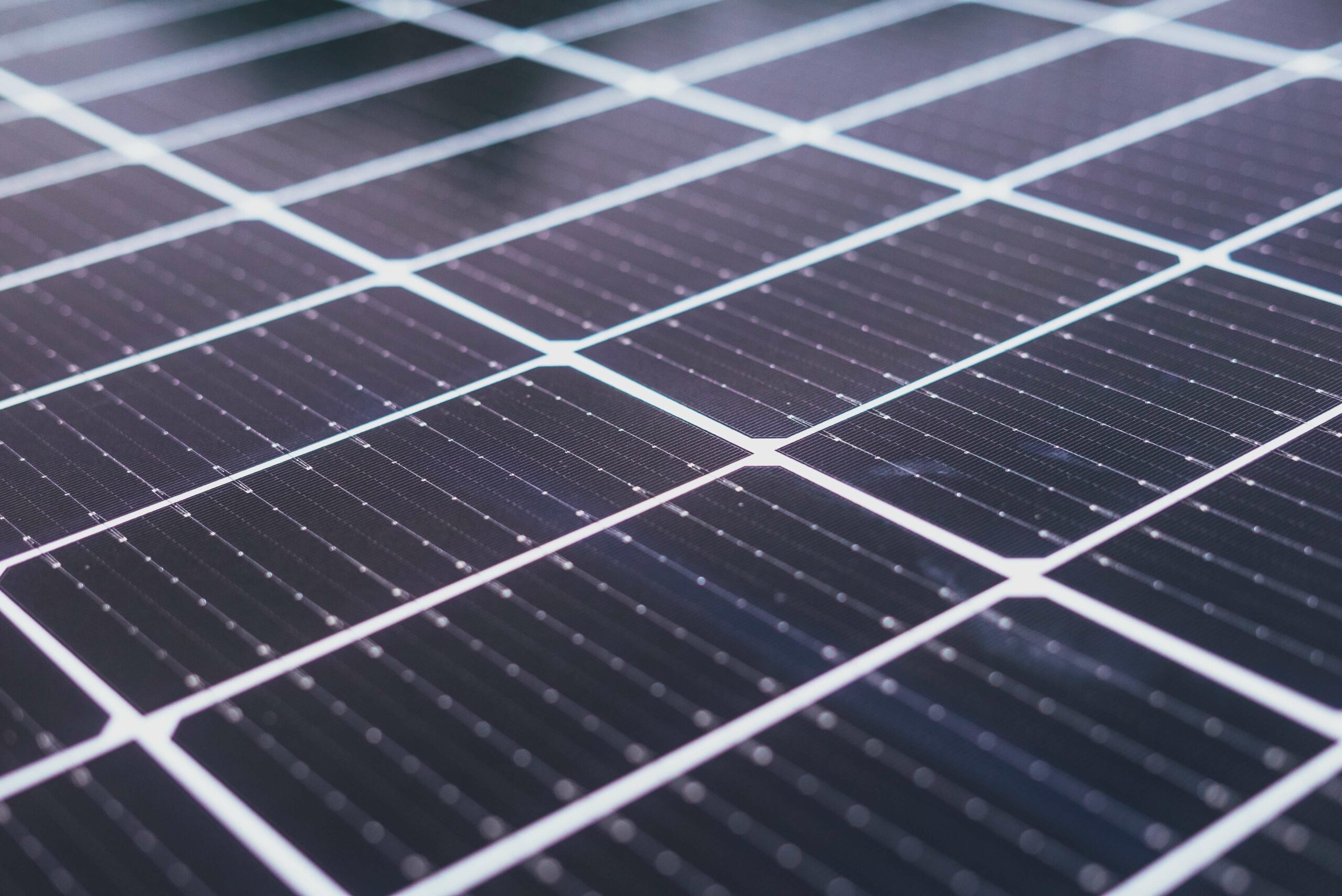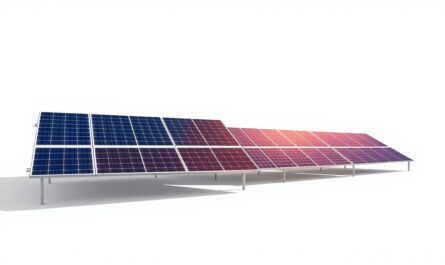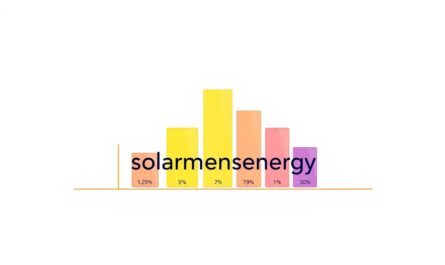Table of Contents
Introduction
Explanation of what a solar panel system is and its benefits
A solar panel system, a photovoltaic (PV) system, combines components to convert the sun’s energy into usable electricity for a home or building. The main benefit of a solar panel system is that it allows you to generate your electricity, reducing or eliminating your dependence on the grid and potentially saving you money on your electricity bills. Additionally, solar power is a clean and renewable energy source, helping to reduce greenhouse gas emissions and combat climate change.
Thank you for reading this post, don't forget to subscribe!Overview of the parts of a solar panel system for a house
The parts of a solar panel system for a house include solar panels, an inverter, a charge controller, a battery bank, a racking system, a monitoring system, and wiring and disconnects. Solar panels are the main component responsible for converting sunlight into electrical energy. The inverter converts the direct current (DC) electricity produced by the solar panels into alternating current (AC) electricity used in a home. The charge controller regulates the flow of electricity from the solar panels to the battery bank to ensure that the batteries are not overcharged or damaged. The battery bank stores the electricity produced by the solar panels for use when the sun is not shining. The racking system holds the solar panels in place, usually on the roof of a house. The monitoring system allows you to track your solar system’s performance and monitor its output. And wiring and disconnects connect all the components and ensure the system is properly grounded and safe.
Solar Panels
Description of how solar panels work
Solar panels work by absorbing photons, or particles of light, from the sun and using them to knock electrons loose from atoms, creating a flow of electricity. This process is known as the photovoltaic effect. Solar panels are made of photovoltaic cells made of semiconductor materials like silicon. When sunlight hits the cells, it causes the semiconductor material to release electrons, creating an electrical current. The electrical current is then sent to an inverter, which converts it into usable AC electricity.
Types of solar panels available and their pros and cons
Several types of solar panels are available, each with pros and cons. Monocrystalline solar panels are made from a single silicon crystal and are the most efficient type of solar panel, but they are also the most expensive. Polycrystalline solar panels are made from multiple crystals of silicon and are less efficient than monocrystalline panels but are also cheaper. Thin-film solar panels are made from a thin layer of semiconductor material and are the least efficient type of solar panel, but they are also the least expensive. There are also newer, more advanced solar panel technologies like multi-junction solar cells, which are even more efficient than monocrystalline cells.
How to choose the right solar panels for your home
Choosing the right solar panels for your home involves considering several factors, such as the amount of available roof space, the cost of the solar panels, the efficiency of the solar panels, and the climate in your area. Firstly, you should assess your energy consumption, roof orientation, and space to determine the number of solar panels you need. You should also consider the cost of solar panels and compare the cost-to-performance ratio between different types of solar panels. Additionally, it would be best to consider the efficiency of the solar panels, which is the amount of electricity they can produce per square foot. Finally, it is essential to consider the climate in your area, as some types of solar panels may perform better in certain climates than others.
Inverter
Explanation of the role of the inverter in a solar panel system
The inverter plays a critical role in a solar panel system by converting the direct current (DC) electricity produced into alternating (AC) electricity used in a home or sent to the grid. Without an inverter, the electricity produced by the solar panels would not be compatible with the appliances and devices in your home.
Types of inverters available and their pros and cons
Different types of inverters are available, each with its advantages and disadvantages. The most common type of inverter is the string inverter, which is typically less expensive than other options. However, string inverters can be less efficient and unreliable than other inverters, such as microinverters and optimizers.
Microinverters are mounted directly on each solar panel and convert the DC electricity from each panel into AC electricity. This allows for greater flexibility and more accurate monitoring of the solar system. This type of inverter is ideal for homes with shading or irregular roof shapes. On the other hand, optimizers are installed between the solar panels and the inverter designed to optimize the solar system’s performance. They can increase the system’s overall efficiency and provide more detailed monitoring.
How to choose the suitable inverter for your home
When choosing a suitable inverter for your home, you must consider your specific needs and budget. A string inverter may be a cost-effective option for a small solar panel system. Still, microinverters or optimizers may be a better choice for a more extensive system or homes with shading issues. It is also essential to consider the warranty and maintenance requirements of the inverter and the company’s reputation and customer service.
In summary, the inverter is a critical component of a solar panel system, responsible for converting the DC electricity produced by the solar panels into AC electricity that can be used in a home or sent to the grid. Different types of inverters have advantages and disadvantages, and selecting the right one for your needs is essential. It’s also important to consider warranty, maintenance, and the company’s reputation when choosing a suitable inverter for your home.
Charge Controller
Explanation of the role of the charge controller in a solar panel system
A charge controller is a vital component of a solar panel system, responsible for regulating the flow of electricity from the solar panels to the battery bank. Its primary function is to ensure that the batteries are not overcharged or damaged, prolonging their lifespan and ensuring the overall efficiency of the solar system.
Types of charge controllers available and their pros and cons
Several charge controllers are available, each with advantages and disadvantages. PWM (Pulse Width Modulation) charge controllers are the most common and affordable option, but they are less efficient than MPPT (Maximum Power Point Tracking) charge controllers. MPPT charge controllers are more advanced and can extract more power from solar panels, resulting in higher efficiency and greater cost savings.
Another type of charge controller is the “smart charge controller,” a combination of PWM and MPPT charge controllers with added features such as monitoring and remote access. They are more expensive than traditional charge controllers but offer greater flexibility and control.
How to choose the suitable charge controller for your home
When choosing a charge controller for your home, it is crucial to consider the size of your solar panel system, the type of batteries used, and your specific needs. For example, suppose you have a more extensive solar panel system. In that case, an MPPT charge controller may be a better option as it will handle the increased power output and provide greater efficiency. An intelligent charge controller may be better if you want to add flexibility and control. It’s also important to consider the compatibility between the charge controller, solar panels, and battery bank.
In conclusion, the charge controller plays a vital role in regulating the flow of electricity from the solar panels to the battery bank and ensuring the longevity of the battery bank. Several charge controllers are available, each with its advantages and disadvantages, and choosing the right one for your specific needs and budget is essential. By considering the size of your solar panel system, the type of batteries used, and your particular needs, you can ensure your solar system is as efficient and effective as possible.
Battery Bank
Explanation of the role of the battery bank in a solar panel system
A battery bank is an essential component of a solar panel system, as it stores the electricity produced by the solar panels for use when the sun is not shining. Without a battery bank, any excess electricity produced by the solar panels would be sent back to the grid and wasted. With a battery bank, you can store this excess electricity at night or on cloudy days, making you more self-sufficient and reducing your dependence on the grid.
Types of battery banks available and their pros and cons
Several types of battery banks are available, each with its advantages and disadvantages. The lead-acid battery is the most common type of battery bank, which is relatively inexpensive and has a long lifespan. However, lead-acid batteries require regular maintenance and can be pretty heavy and bulky. Another option is the lithium-ion battery, which is lightweight and requires little maintenance but is more expensive. Another option is the flow battery, a newer technology it is more costly but offers longer life and is more efficient than the others.
How to choose the right battery bank for your home
When choosing the right battery bank for your home, you must consider your specific needs and budget. A lead-acid battery may be the best choice if you’re looking for a low-cost option. A lithium-ion battery may be the way to go if you want a lightweight, low-maintenance option. A flow battery is the best choice if you want a long-life and efficient battery. Additionally, consider the capacity you will need, the number of days of autonomy you desire, and the environmental conditions of the place where you will install the battery bank.
In summary, the battery bank is a vital component of a solar panel system that stores the electricity produced by the solar panels for use when the sun is not shining. Several types of battery banks are available, including lead-acid, lithium-ion, and flow batteries, each with advantages and disadvantages. When choosing the right battery bank for your home, consider your specific needs, budget, the capacity you will need, the number of days of autonomy you desire, and the environmental conditions of the place where you will install the battery bank.
Racking System
Explanation of the role of the racking system in a solar panel system
The racking system is an essential component of a solar panel system, as it holds the solar panels in place and ensures that they are correctly aligned to capture the maximum amount of sunlight. The racking system is typically installed on the roof of a house, although it can also be installed on the ground or a carport.
Types of racking systems available and their pros and cons
Several racking systems are available, each with advantages and disadvantages. The most common types of racking systems are fixed-tilt, adjustable-tilt, and tracking systems.
Fixed-tilt racking systems are the most basic type and are typically the most affordable. They are designed to hold the solar panels at a fixed angle and are ideal for homes with a south-facing roof. However, fixed-tilt systems are not adjustable and may not capture the maximum sunlight during the year.
Adjustable-tilt racking systems are similar to fixed-tilt systems, but they allow the angle of the solar panels to be adjusted to optimize the amount of sunlight captured. They are more expensive than fixed-tilt systems but ideal for homes with roofs facing different directions.
Tracking systems are the most advanced type of racking system designed to follow the sun as it moves across the sky, allowing them to capture the maximum amount of sunlight during the day. However, tracking systems are the most expensive racking system and require regular maintenance.
How to choose the right racking system for your home
When choosing a racking system for your home, it is essential to consider factors such as the direction of your roof, the climate in your area, and your budget. You should also consider the racking system’s long-term cost, including maintenance and repairs.
In conclusion, the racking system is an essential component of a solar panel system. It is responsible for holding the solar panels in place and ensuring they are correctly aligned to capture the maximum amount of sunlight. Several racking systems are available, each with its advantages and disadvantages. Choosing the right racking system for your home requires considering factors such as the direction of your roof, the climate in your area, and your budget. Additionally, it’s essential to consider the racking system’s long-term cost, including maintenance and repairs.
Monitoring System
Explanation of the role of the monitoring system in a solar panel system
The monitoring system plays an essential role in a solar panel system by providing real-time data on the system’s performance. This includes information on the amount of electricity produced by the solar panels, the amount consumed by the home, and the amount sent to the grid. This data is used to ensure that the solar system is operating at optimal performance and to identify any issues that may need to be addressed.
Types of monitoring systems available and their pros and cons
Different monitoring systems are available, each with its advantages and disadvantages. The most basic monitoring systems provide data on the amount of electricity produced by the solar panels, while more advanced techniques also provide data on the performance of individual solar panels and the system’s overall performance.
One popular type of monitoring system is web-based monitoring, which allows homeowners to access data on their solar system through a website or mobile app. This monitoring system is easy to use and provides a wealth of data on the solar system’s performance. However, it requires a reliable internet connection and may not be as accurate as other monitoring systems.
Another popular type of monitoring system is remote monitoring, which uses a device installed on the solar system that communicates with a monitoring company. This type of monitoring system is highly accurate and provides real-time data on the solar system’s performance. However, it can be more expensive than other monitoring systems and requires a monthly fee for the monitoring service.
How to choose the right monitoring system for your home
When choosing a monitoring system for your home, it’s essential to consider your specific needs and budget. If you’re looking for a basic system that provides data on the amount of electricity produced by solar panels, a web-based monitoring system may be the right choice. However, a remote monitoring system may be a better choice if you’re looking for a more advanced system that provides detailed data on the solar system’s performance. Ultimately, the correct monitoring system for your home will depend on your unique needs and budget.
In summary, the monitoring system plays a vital role in a solar panel system by providing real-time data on the system’s performance. Different types of monitoring systems are available, such as web-based and remote monitoring, and each has its advantages and disadvantages. When choosing a monitoring system for your home, it’s essential to consider your specific needs and budget. A web-based monitoring system may be the right choice for primary data, and a remote monitoring system may be a better choice for advanced data and detailed performance of the solar system.
Wiring and Disconnects
Explanation of the role of wiring and disconnects in a solar panel system
Wiring and disconnects play a crucial role in a solar panel system, connecting the various components of the system and ensuring that it is properly grounded and safe. Without the correct wiring and disconnects, a solar panel system would not be able to function correctly.
Types of wiring and disconnects available and their pros and cons
Several types of wiring and disconnects are available for solar panel systems. The most common type is copper wiring, which is known for its durability and conductivity. Aluminum wiring is another option, but it is less durable and can be less efficient. A flexible conduit is a popular choice for solar panel systems, as it is easy to install and can be used in tight spaces.
When it comes to disconnects, there are several options available. The most common type is a fused disconnect, designed to protect the solar panel system from overcurrents. Non-fused disconnects are also available but are not as effective at protecting the system. Ground fault circuit interrupters (GFCIs) are another option designed to protect against electrical shocks.
How to choose the correct wiring and disconnects for your home
When choosing the proper wiring and disconnects for your home, it is crucial to consider factors such as the size of your solar panel system, the type of environment it will be installed in, and the specific home needs. For example, if you live in an area prone to storms, choose a wiring and disconnects option designed to withstand high winds and heavy rain.
In summary, wiring and disconnects play a crucial role in a solar panel system by connecting the various components and ensuring that it is properly grounded and safe. Copper and aluminum wiring and flexible conduit are the most common types of wiring, and Fused disconnect, non-fused disconnect, and GFCI are the most common types of disconnects. When choosing the correct wiring and disconnects for your home, it is crucial to consider factors such as the size of your solar panel system, the type of environment it will be installed in, and the specific home needs.
Permit and Installation
Explanation of the importance of permit and installation for a solar panel system
Explanation of the importance of permit and installation for a solar panel system:
Installing a solar panel system in your home is a significant investment that can provide long-term energy savings and environmental impact. However, it’s essential to understand that proper permitting and installation are necessary for your solar panel system to function safely and efficiently.
Obtaining the necessary permits ensures that your solar panel system meets all local, state, and federal regulations. Your solar panel system may be subject to fines, penalties, and even removal without the proper permits. Additionally, obtaining the permits beforehand can save you time and money in the long run, as it can prevent delays and costly mistakes during the installation process.
How to find a professional and certified contractor to install your solar panel system
Hiring a professional and certified contractor to install your solar panel system is just as crucial as obtaining the necessary permits. A professional contractor will have the knowledge and experience to install your solar panel system properly, ensuring that it functions safely and efficiently. They will also be able to provide you with a warranty on the installation, so you can have peace of mind that your investment is protected.
Tips for ensuring a successful installation
- Research and compare different solar panel options and contractors
- Check for certifications and licenses
- Get a detailed contract and scope of work
- Communicate with your contractor
- Inspect the final installation
By following these tips and hiring a professional and certified contractor, you can ensure that your solar panel system is installed safely and efficiently, providing you with long-term energy savings and environmental impact.
Conclusion
Summary of key points
- Securing the proper permits for a solar panel system is essential to comply with regulations and avoid penalties.
- Engaging a certified professional contractor guarantees a safe and efficient installation.
- Essential steps for a successful solar panel installation: research, verify, secure, communicate, inspect
Note: The above information is general, and it is always best to consult a professional or licensed solar panel installer to determine the best solar panel system for your specific needs and circumstances.





